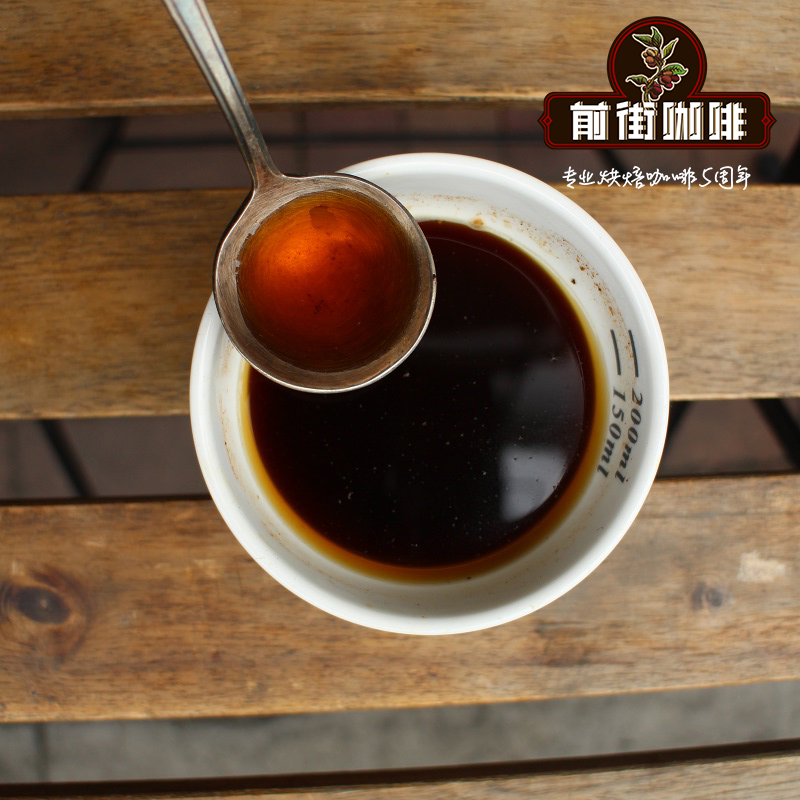The characteristics of Katimo Coffee Cafe Coffee Cafe Coffee Coffee Cafe Coffee Cafe Cafe Coffee Cafe Coffee Coff The taste of Katimo coffee

Professional coffee knowledge exchange more coffee bean information please follow the coffee workshop (Wechat official account cafe_style)
Coffee tree is a shrub. Botanically, it belongs to Rubiaceae family (Rubiaceae) of the genus Coffea. It has more than 6000 species and more than 500 genera. Although 25 to 100 of them have been questioned whether they should be included in the Coffea. Most of the raw beans with economic value belong to C. arabica or C. canephora species, called Arabica Arabica (coffea arabica) and Robusta Robusta (coffea canephora), respectively. Coffea arabica is the result of inbreeding of allotetraploid (2n = 44). There are 40 to 50 known varieties (infraspecific taxa), which are suspected to be from var. Arabica (including var. C. arabica and var in typica. The two varieties of bourbon. In addition to these two varieties, there are Liberika Coffee Liberica and Issa Coffee Excelsa.
In terms of economic value, the main varieties of coffee in circulation are Arabica and Robusta. Arabica coffee accounts for about 70% of the market, and Robusta accounts for about 30%.
There are two main varieties of Arabica, namely Kaddura Caturra and Katimor. Katimo is currently the most widely grown coffee variety in the world, accounting for about 75% of Arabica varieties. Katimo Catimor is a hybrid of Caturra and Timor Timor, with a gene of 25% Robusta. The advantages are strong disease resistance, drought tolerance and high yield.
[Catimor] Katimo species
Timor and Caturra were mixed. Timor is the mating species of Arabica and Robusta, and has strong resistance to leaf rust. Katimer was found in Portugal in 1959. The palate is obvious and easy to distinguish, bitter acid with a bit of astringency, and the finish is often salty. It is a high-yield variety with high planting density and strong resistance to leaf rust. In the past, Catimor was grown in large quantities in Latin America on the advice of agricultural experts, and after a decade, experts confirmed that their advice was wrong because coffee farmers could not sell their beans at the right price.
It was hybridized with rust-resistant Timor and Caturra in Portugal in 1959. It has early maturity and strong disease resistance, and its yield is much higher than that of other varieties with commercial value. For this reason, we must be diligent in fertilization and pay attention to shading. The offspring of Katimo Tmur8667 are relatively small, but their fruits and seeds are large. Cartimo line Tmure 5269 is very strong and suitable for growing in areas with an altitude of 600m-900m and annual rainfall of more than 3000 centimeters. The Tmur5175 is highly productive and robust, but it can be troublesome at too high or too low altitudes. At low elevations, its quality is similar to that of other varieties of commercial value, but above 1200 meters, its quality is much better than Bourbon, Caturra and Cauai.
From 26 to 28 February 2001, the Royal Planning Foundation of Thailand and the United Nations Food and Agriculture Organization jointly organized an event entitled "The First Asian Regional Round-Table on Sustainable, Organic and Speciality Coffee Production, Processing and Marketing" in Chiang Mai (the first Round Table on Sustainable, Organic and refined Coffee production, processing and Marketing in Asia). During the meeting, Dr. Ernesto Illy, the boss of the Italian Illy Coffee Company, mentioned the poor quality of Katimo coffee in his speech "the negative factors of the quality of coffee raw beans." Because it has 25% robusta coffee gene, although it enhances the ability to resist rust, its quality is reduced by its influence.
Katimo can be a good raw material for instant coffee and beans for blending.
Important Notice :
前街咖啡 FrontStreet Coffee has moved to new addredd:
FrontStreet Coffee Address: 315,Donghua East Road,GuangZhou
Tel:020 38364473
- Prev

Is the Katimokatim coffee bean Arabica? Taste description of the difference in flavor between Katim and tin pickup coffee beans
Professional coffee knowledge exchange more coffee bean information please follow the coffee workshop (Wechat official account cafe_style) coffee varieties this information is not easy to be noticed by coffee users in the early days, often engaged in the roaster or players will be a little concerned, but will not be too deep, persistent, because the front
- Next

Guatemala Vivette Nan Fruit Coffee recommended _ Vivette Nan Fruit Coffee Flavor
Professional Coffee knowledge Exchange more information on coffee beans Please follow the coffee workshop (Wechat official account cafe_style) Coffee in Guatemala grows on high-altitude cloud belts. The climate conditions such as big temperature differences in the morning and evening make the coffee not grow too fast. Vivette Nango Highland is a place name with great temperament in Chinese translation. it is located in the northwest of Guatemala and has fertile soil.
Related
- Detailed explanation of Jadeite planting Land in Panamanian Jadeite Manor introduction to the grading system of Jadeite competitive bidding, Red bid, Green bid and Rose Summer
- Story of Coffee planting in Brenka region of Costa Rica Stonehenge Manor anaerobic heavy honey treatment of flavor mouth
- What's on the barrel of Blue Mountain Coffee beans?
- Can American coffee also pull flowers? How to use hot American style to pull out a good-looking pattern?
- Can you make a cold extract with coffee beans? What is the right proportion for cold-extracted coffee formula?
- Indonesian PWN Gold Mandrine Coffee Origin Features Flavor How to Chong? Mandolin coffee is American.
- A brief introduction to the flavor characteristics of Brazilian yellow bourbon coffee beans
- What is the effect of different water quality on the flavor of cold-extracted coffee? What kind of water is best for brewing coffee?
- Why do you think of Rose Summer whenever you mention Panamanian coffee?
- Introduction to the characteristics of authentic blue mountain coffee bean producing areas? What is the CIB Coffee Authority in Jamaica?

